Hole’s Essentials of Human Anatomy & Physiology ISE
Hole’s Essentials of Human Anatomy & Physiology ISE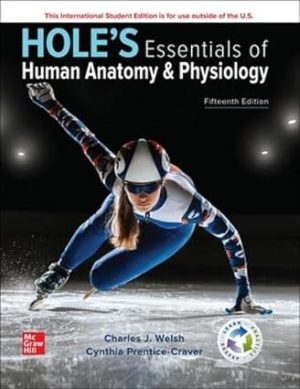
Brand New, International Global Edition, Does Not include Access Code.
Medical Books Library for Doctors, Physicians, Surgeons, Dentists, Intensivists, Physician Assistants, Nurses, Medical Technicians and Medical Students
Medical books library


Brand New, International Global Edition, Does Not include Access Code.
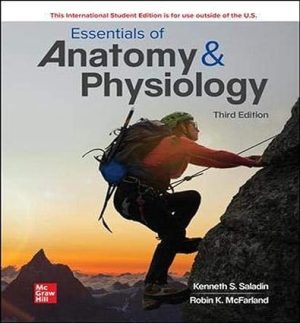
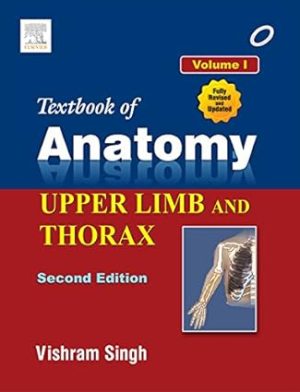
The Second Edition of this Volume is updated in accordance with the syllabus of Anatomy recommended by the Medical Council of India. It covers in detail the anatomy of upper limb and thorax. The anatomy of heart and lungs is co-related cllinically in depth. Following recent trends of anatomy education, the book in addition to basic information provides knowledge on anatomical/embryological/histological basis of clinical conditions through its features — Clinical Correlation and Clinical Case Study. Written in simple and easy-to-understand language, this profusely illustrated book provides knowledge of anatomy without extraneous details – ideal for undergraduate medical and dental students. It is highly recommended for those preparing for various entrance examinations, like PG entrance, USMLE, PLAB, etc.
Salient Features
? Detailed exposition on joints and nerves of the upper limb
??Surgical anatomy of heart and lungs
? Chapters on Bones of the Upper Limb, Pectoral Region, Axilla (Armpit), Arm, Forearm, Elbow and Radio-ulnar Joints, Lungs (Pulmones), Trachea and Esophagus have been revised thoroughly
? Clinical Correlations integrated in the text, highlighting practical application of anatomical facts, have been modified extensively
? Addition of new line diagrams and improvement in earlier diagrams
? Addition of halftone figures to enrich the understanding of clinical correlations
? Inclusion of new tables and flowcharts and revision in earlier tables
? Clinical Case Study at the end of each chapter to initiate interest of students in problem based learning (PBL)
? Additional information of higher academic value presented in a simple way in N.B. to make it more interesting for readers, especially the aspiring postgraduates
? Important facts useful for candidates appearing in various entrance examinations like PGME, USMLE, PLAB, listed under Golden Facts to Remember
? Multiple Choice Questions at the end of the book for self-assessment of the topics studied
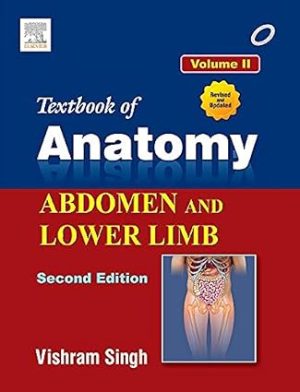
The Second Edition of this Volume is updated in accordance with the syllabus of Anatomy recommended by the Medical Council of India. It covers in detail the anatomy of abdomen and lower limb. Following recent trends of anatomy education, the book in addition to basic information provides knowledge on anatomical, embryological, and histological basis of clinical conditions through its features — Clinical Correlation and Clinical Case Study. Written in simple and easy-to-understand language, this profusely illustrated book provides knowledge of anatomy without extraneous details – ideal for undergraduate medical and dental students. It is highly recommended for those preparing for various entrance examinations, like PG entrance, USMLE, PLAB, etc. Salient Features
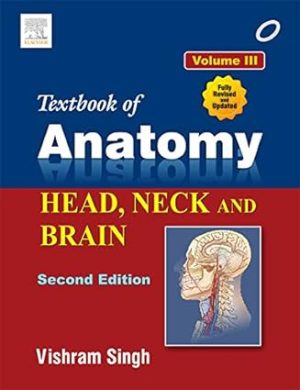
The Second Edition of this Volume is updated in accordance with the syllabus of Anatomy recommended by the Medical Council of India. It covers in detail the anatomy of head and neck and deals with essential aspects of brain. Following recent trends of anatomy education, the book in addition to basic information provides knowledge on anatomical/embryological/histological basis of clinical conditions through its features — Clinical Correlation and Clinical Case Study. Written in simple and easy-to-understand language, this profusely illustrated book provides knowledge of anatomy without extraneous details – ideal for undergraduate medical and dental students. It is highly recommended for those preparing for various entrance examinations, like PG entrance, USMLE, PLAB, etc.
Salient Features
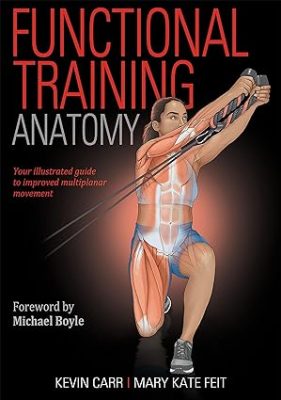
The term “functional training” has been associated with a fair amount of controversy ever since it became part of the fitness training vernacular more than a decade ago. In Functional Training Anatomy, noted strength and conditioning specialists Kevin Carr and Mary Kate Feit cut through the clutter and misconceptions about functional training and cover all aspects of how to build a purposeful, effective, and efficient program that provides the strength, stability, and mobility you need to support your body in life and in sports.
Beginning with a clear definition of what functional training entails, you will learn about the importance of mobility training and its impact on movement quality, performance, and injury reduction. Use the warm-up activities to prepare for high-intensity activities. Use the medicine ball and plyometric exercises to learn to produce and absorb force. Develop power with Olympic lifts, kettlebell swings, and jumping exercises. Improve strength in the upper body, lower body, and core with hip-dominant, knee-dominant, pushing, pulling, and core exercises.
See the inner workings of each of the exercises with superb full-color illustrations that show the primary and secondary muscles and connective tissue being used. The detailed instructions for these multiplanar and unilateral exercises ensure you execute each one correctly and safely. The Functional Focus element shows how the exercises translate to specific activities, whether that be an explosive athletic move or simply moving a box.
Functional Training Anatomy incorporates traditional and nontraditional exercises and mobility drills that will help you increase functional strength and reduce injury so your body is prepared to support the demands of athletic performance and daily living.
Earn continuing education credits/units! A continuing education exam that uses this book is also available. It may be purchased separately or as part of a package that includes both the book and exam.
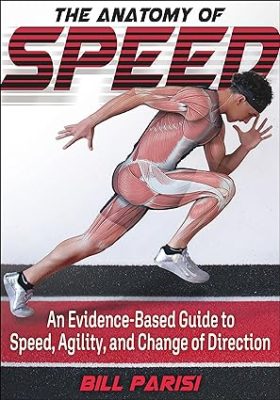
While speed is often viewed as the defining characteristic of elite athletic performance, there remains plenty of misinformation and confusion about what speed truly is and how it can be developed. Speed is far more than seconds on a stopwatch—it is the result of multiple anatomical systems working together in highly coordinated unison, from the cross-body co-contractions of deep myofascial tissues to the pulsing contract-and-release cycle of the nervous system.
The Anatomy of Speed is a resource like no other. Bill Parisi, the internationally recognized expert and founder of Parisi Speed School, delves deep into the physiological mechanisms of speed through in-depth interviews with top experts and researchers in the field. The text provides scientifically proven exercises and drills for developing speed that will help performance coaches and athletes more effectively maximize development of this precious attribute. Using detailed photo sequences, enhanced with anatomical overlays, you will understand the different manifestations of speed, the biomotor systems that drive them, and scientifically proven drills and exercises for developing these abilities:
The Anatomy of Speed converts the science into practical application, allowing you to select the most effective drills and exercises, and tailor a training program unique to your athlete’s needs. The exercises—which are each designated as basic, moderate, or advanced—are organized by complexity and speed-related categories. Exercises aimed at improving range of motion and priming the nervous system set the stage for optimal results. Speed-specific strength exercises use equipment like free weights, medicine balls, and sleds to target important speed and change-of-direction qualities. A practical programming chapter helps you assemble it all into individualized training based on sport, position, body type, skill level, movement preference, and training history.
Speed comes in many forms. It is a physical skill that can be developed and improved with targeted training and a solid understanding of mechanics. The Anatomy of Speed offers equal parts science, art, and practical application to do just that.
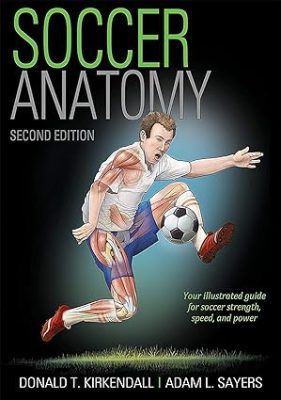
Get an inside look at training for the world’s most popular sport. Soccer Anatomy, Second Edition, shows you what it takes to run faster, resist challenges from opponents, be stronger in the tackle, jump higher, delay fatigue, and prevent injury.
In this second edition, elite-level soccer coach Adam Sayers joins Donald Kirkendall—one of the most recognized experts in soccer training and injury prevention—to bring you more than 85 soccer-specific exercises designed to help build and strengthen the athlete.
Full-color anatomical illustrations take you inside each exercise to show you which muscles are involved and how they are fundamentally linked to soccer performance. Strength-building exercises are arranged anatomically: by core, back and hips, legs, shoulders and neck, chest, arms, and legs. Each exercise includes clear step-by-step descriptions. Variations allow you to target specific areas or to modify the exercise based on your age, experience, and training goals.
You’ll also find exercises and advice to help minimize common soccer-related injuries to the head, knees, hips, groin, and thigh and calf muscles, along with exercises taken from FIFA’s warm-up program. Developed by FIFA’s Medical Assessment and Research Centre, the program “The 11+” is proven to reduce the most common injuries.
For coaches and players looking to improve skill and build strength and endurance on the pitch, let the authoritative advice and expert instruction in Soccer Anatomy be your go-to training tool!